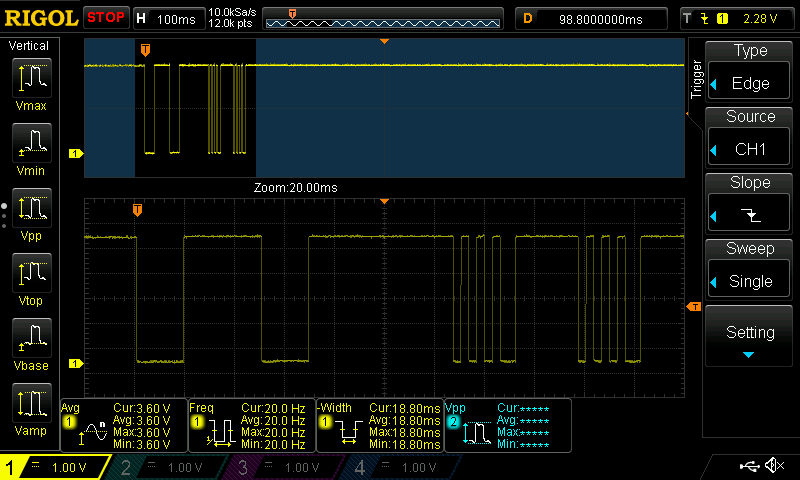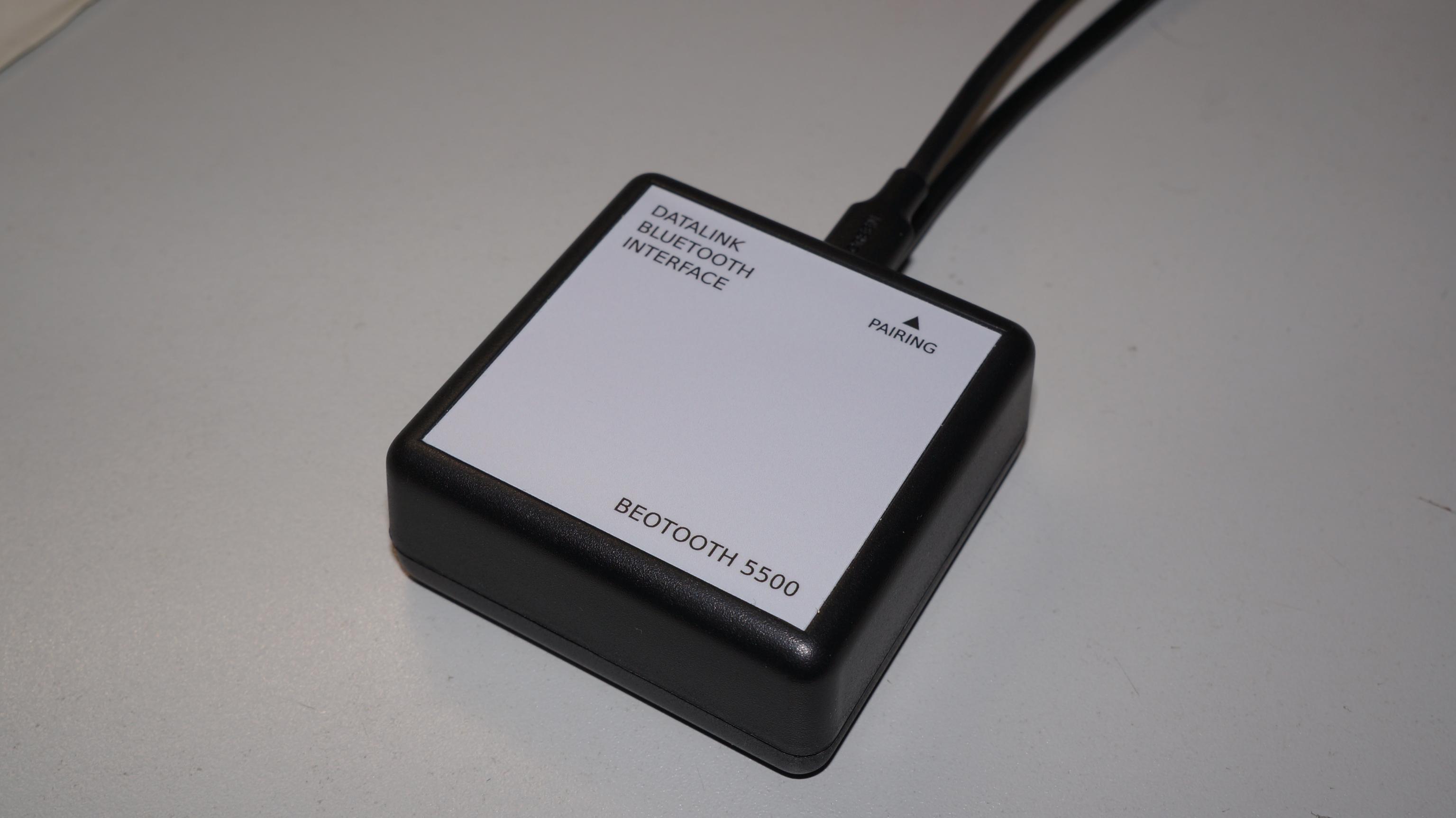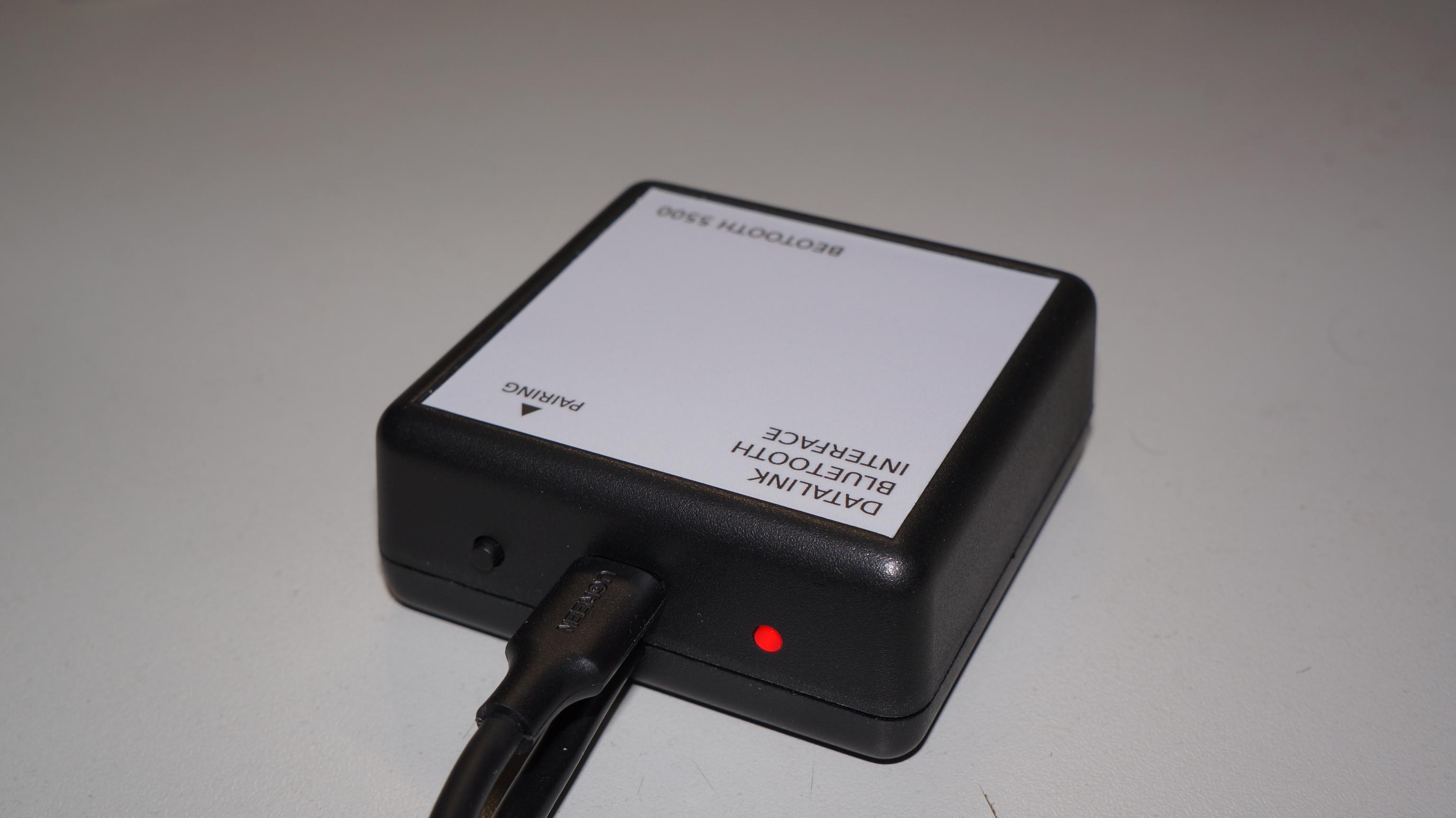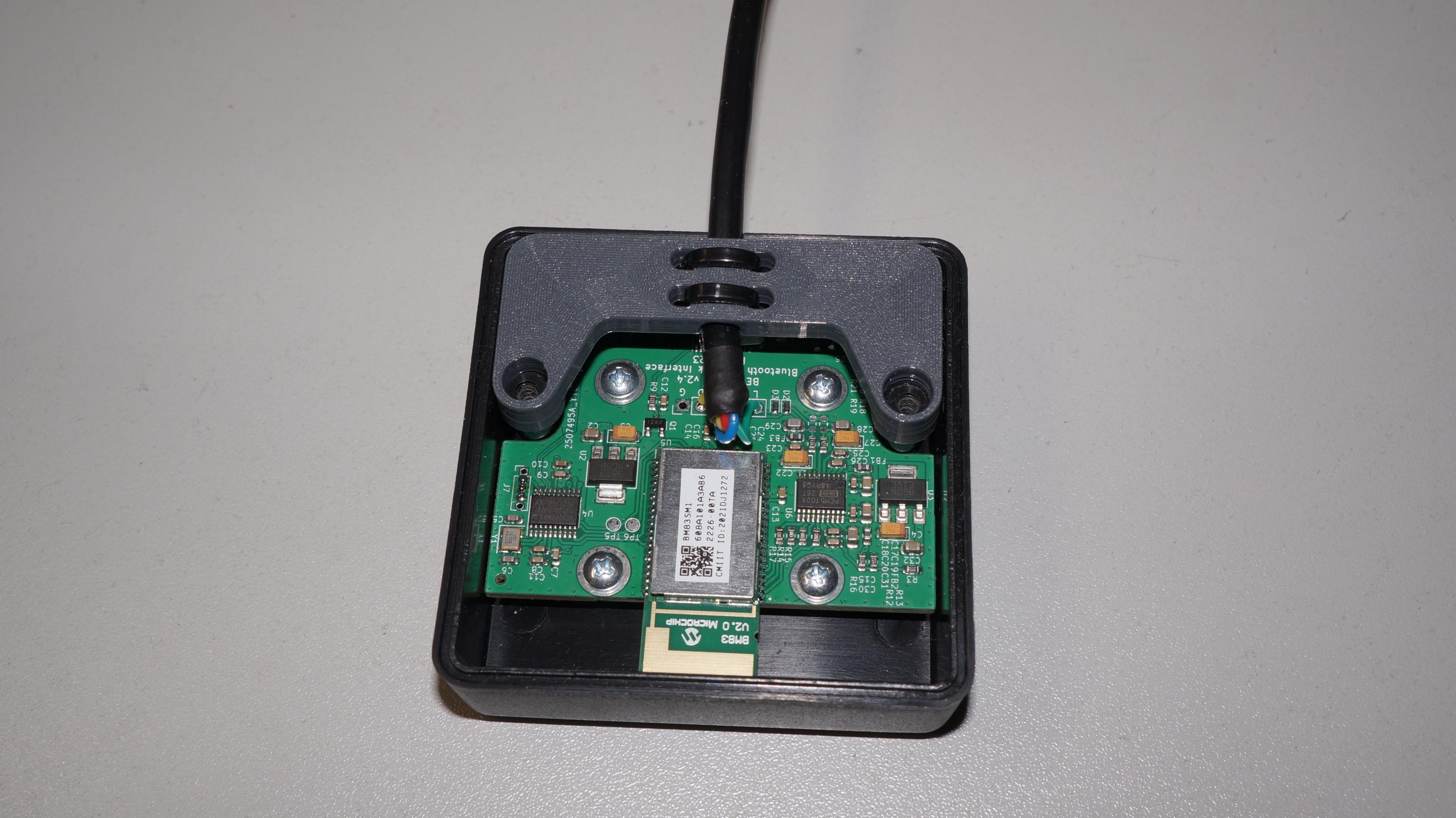Forum Replies Created
- AuthorPosts
-
Hi @kleb,
Thank you for your feedback !
- I have checked the documentation of the Bluetooth chipset I’m using, and it seems possible. I might look into that in the future.
- Hmm this one I haven’t seen, but I mostly use my Beotooths with an Android phone or a Linux PC. I’ll try to get my hands on a Window PC to check that !
- You’re right about that. In my mind, the Beotooth is meant to be used at a fixed volume level, with the volume controlled by the Beomaster. I’ll try that, and see if I can make changes to the scale.
Glitch : I already tried to squeeze the pins together without taking the connector appart (using small pliers), it seemed to help temporarily, but not for long.
Thank you for the picture of the pin. I’ll look for potential replacement connector, but this type of speaker socket has been out of style for quite some time now, not sure if some PCB-solderable parts remains.
Hi Die_Bogener,
Thank you for the tip !I forgot to mention that I already did a full restoration of that Beomaster a few years ago, which included replacing the relays, so I know the relay is good.
(btw if you do so, make sure you use Cadmium plated relays for the power supply relay, newer, Non-cadmium relays really don’t last long with the inrush current).Also just moving a bit the speaker plug in the connector is usually enough to get it working back, so it really behaves like a connector fault.
Hey, Sorry for the long delay answering, since the forum update I don’t get emails anymore when replies are added to the thread.
On T.W.G said<p>Very interesting device and good work!</p>
<p>Does it support other codes than AAC? For example aptx?</p><br>
The Beotooth uses the Microchip BM83 Bluetooth module, which only support AAC and SBC.
I ad a look at AptX in the beginning of that project, but it is a Qualcomm proprietary technology, only available on Qualcomm Bluetooth modules,
and Qualcomm doesn’t give their SDK to everybody except, so no luck there.
AAC should deliver a similar quality to AptX (except on some phones where the AAC codec seems flawed, but that’s an issue with the phone manufacturer).On Madskp said<p>A little curious question. Would it be possible to change the TAPE command with the CD command for the Beotooth 5500?</p>
<p>One usecase I could seen for this is a computer using one Beotooth as speaker connection, and the other beotooth could the be used for connecting a phone</p>
<p> </p><br>
That’s an interesting idea, I had not thought about that (as I still listen to CDs on a regular basis).
On the back of my mind, swapping the control messages should be fairly easy, the status messages are a bit different though, but nothing impossible.
I’ll have a look at that when I have some free time.
(It could be added as a selection command through the USB Serial interface, that is already used to customise the Bluetooth name of the Beotooth).
There would be only 2 options here : Beogram or Beocord emulation (AFAIK Beogram CD and Beogram uses the same command set).
On a system with CD / PHONO / TAPE / TP2, CD and TAPE share one datalink bus, and PHONO and TP2 share another bus.The Beotooth is more targeted toward Datalink era B&O devices, those use a data bus through a DIN7 socket to plug into the Beomaster.
Your Beomaster is an earlier model, and doesn’t use the Datalink bus. The Beotooth would still work as an good audio source for it if fitted with a DIN5 connected instead of the DIN7.
I can’t seem to find the PM either on the new version of the forum, so if you’re interested nonetheless, just leave a comment on my website with your email address, and I’ll be in touch.
EDIT : I can’t seem to be able to post a link, is the forum really that broken ? 🙁
You’ll have to resort to lookup on a search engine “pila.fr Beotooth 5500”
For those who want the new FW version, maybe just do the same (ask as a comment on my website) until I find how to read / send PM.
Hello,
Already 2 months went by since my last update here, and I have another firmware update available :
V1.5 fixes an issue where the Beotooth would mistake a datalink command for a Play command, and start playing when it should not (typically triggered on some Beosystem by switching from CD to Radio).
As usual, contact me in PM to obtain the new FW and update instructions !
Bonjour,
Contact pris par message privé.
Cordialement
Bonjour Aladin,
J’ai conçu un récepteur Bluetooth adapté aux chaines Datalink : https://beoworld.dev.idslogic.net/forums/topic/beotooth-5500-a-datalink-bluetooth-receiver/
Faites moi signe par message si vous êtes intéressé.
Hello,
Quick update for those who already own a Beotooth 5500.
Firmware V1.3 is now available, with the following changes :- Fix playback not resumed when switching from Beogram to Beotooth (I was not processing that datalink command)
- Prevent transmitting AVRCP (Playback control) commands to Bluetooth player when player is not sending audio. This fixes an issue where I was listening music on my computer though the Beotooth, then switched to a headset. A few minutes later, The Beomaster would, rightfully, go to sleep, but that caused a “pause” AVRCP command to be emitted, pausing the playback. “Play” commands are still sent unconditionally, to be able to resume playback.
If you are interested to get that firmware update, contact me via private message.
In other news, I am still in contact with Microchip, diagnosing why the AVRCP Browsing feature is not working. Once that is solved, I should be able to support selecting a track by its track number directly.
B3OHACK3R wrote: Figuring that out would mean to download and decompile the firmware.Just curious, how would you recover the firmware from such a device ? Is it still in a separate mask rom like the older B&O products ?
B3OHACK3R wrote:
How are you counting those 8 bits?
So in your capture from above – are you seeing two bytes each being 01010100?Exactly ! Although I have the bit values inverted in my notes, since the bus is pulled to 5V through a resistor, and actively pulled low by the end devices, so I use ‘1’ when the bus level is 0V.
In its simplest form, all commands begin and end with a low bit (so they are effectively 6 bits left for the command), and are transmitted twice with an 8 bit pause in between. As the controlled devices became more complex, so did the protocol, and eventually it grew up into quite a bag of knots (French expression, but I think it should convey its meaning well enough).
The live status featured on the beosystem 5500 for example breaks both those rules, but still manages compatibility with older devices ! I’m quite impressed actually, I don’t know what the software tools were in 1986, but making that protocol work back then could not have been an easy task !
What I need to know is does this look correct, or do I need to do some settings in the Saleae application? Also if I export the data in binary format what is the best way to compare them to those datalink commands that are available in different online projects? I have found a HEX editor, but unsure what format I must show the data in to be compareable (BInary, HEX, Decimal ??) Thanks in advance
This look totally correct, here is a scope capture of out of the TAPE2 socket on my Beomaster 5500, from a few years ago.

I have successfully reverse engineered most of the DL-80 protocol, but my notes really need a good cleanup to be of use (It’s mostly a pile of different files, scope captures, logic analyzer traces, etc…)
I do believe the 2 pulses are either a compatibility mode for older devices (I think I read somewhere that some pre-datalink devices used double pulses to trigger play / pause), or a way to trigger a collision on the bus and get the end device to stop talking and listen.
What you have following that is definitely the “Beocord play” command, so I think you’re all set up.
B3OHACK3R : Don’t reason with the pulse length for the DL-80, it’s simply made of 8 bits packets with 3.125ms bit duration.
Hi pepps,
If you shorted live and neutral, there should have been no voltage applied to your Penta, so no damages. Did you check the continuity of the Penta power cord ? Is it possible that the cable was damaged during your modification ?
Regards,
Jeep 50 : Contacted you via PM
Hi,
I’m not too familiar with the DL’86, as my projects uses DL’80.
The easiest way to achieve control of your BM6500 might be to send the control codes over IR, that way you can just duplicate what your remote is sending.
Hello,
Right before the Christmas celebrations, as I have started shipping some Beotooth 5500, I have just put together an assembly / usage manual. You can find it there :
https://pila.fr/wordpress/wp-content/uploads/2023/12/Beotooth_Manual_V1.0.pdf
Wishing you all a merry Christmas from France !
Good evening,
Sorry for letting that many days go by without updates, I originally planned to write last week about my avancement,
but I caught the covid in the meantime, and while the novelty factor has dry out, the fever is still quite effective.Anyway, I’m now back on my feet (mostly), so here are the news :
Following B3OHACK3R’s concerns about the usage of tantalum caps, I went looking for other regulators that would be stable with ceramic caps.
I found a new Texas Instrument part, the TLV761 : it is stable with output ceramic caps, has a lower Vdrop and a better PSRR than the LM1117 I originally selected,
which both means less noise when used on a noisy USB-C supply. Bonus points, it is pin compatible with the LM1117, and comes with a soft start function ! Perfect !
I’ll be using those with cermic caps from now on.I did make some (rough) measurement of the PCM5102 DAC using my PC soundcard input to investigate the impact of changing the value of the output filter resistor.
Going from 470R to 100R produces a small (around -6dB) improvement of a bit of 50Hz present in the output. But that noise was already at a ridiculously low level (-90dB).
I reckon it lowers the output impedance of the system, making it a tiny bit better at ignoring the 50Hz ambiant noise ?
The improvement seems ever so small in my case, I don’t think I’ll implement it.I also spent a bit of time working on the firmware. I does now identify itself as a USB CDC device when plugged to a computer,
which means you can connect to it with a terminal emulator (such a Putty), and get a command prompt.
Only 3 commands are supported now : querrying the firmware version, querrying the device bluetooth name, and setting the bluetooth name.
That means if you have multiple Beotooth, each one can be named to reflect the system it connects to.
More commands might be implemented in future firmware versions.I did mill about a dozen enclosure, and the result is even better than the first I did, so now I have everything required to build the first few Beotooth.
I’ll be writing to those who sent me messages as soon as I am ready to ship theirs.Wishing you all healthy holidays !
Hello Beoworlders,
Weeks went by, and this project is now reaching completion. I have received the new PCBs, and got myself access to a small CNC machine to mill the back of the enclosure, so that I’m not ashamed anymore of showing that side of the device. I have also made properly sized labels (the previous ones were too small), and designed and printed a cable holder, that ensures any mechanical strain on the cable is transferred directly to the enclosure rather than ripping the wires off the PCB.
This version does support a USB firmware upgrade process, so that both the MCU and the BT module firmware can be upgraded later.
I also came up with a pricing scheme. My intent is to offer those mainly as kits, only requiring some beginners soldering skills to assemble it. A kit would include :
- A PCB fully programmed, missing the red LED.
- The red LED. (As it is easier to have it flush with the enclosure when soldering it after mounting the PCB).
- Around 80cm of 4 conductor cable.
- The DIN-7 connector.
- The enclosure with properly machined holes, and all screws.
- The cable holder part, with 2 zip-ties.
- The adhesive label.
- The pricing would be 80€ (ship. Excl) for a kit, and 115€ for a fully assembled device.
I still need to spend a bit of time tweaking some features, notably I am looking at a way to change the device Bluetooth name, so that you can have it match the system it is connected to.
Lastly, I have everything needed to build a few kits, except I need to order new enclosures, as I ruined the few I already bought honing my CNC machining skills (no wonder machinist is a real job, who would have thought !), and only the last one ended up living to my expectations.
Based of those 2 points, I expect to be able to provide the first kits in a few weeks. Please contact me in PM if you are interested.
While I work on those last details, here are a few up-to-date picture :



Only noticed when measuring a PCM5122 on the audio analyzer (pretty much the same chip on the analog output).
Would you happen to recall the output load characteristic during that test ? Having a relatively low (~1k) load impedance could definitely degrade that THD.
You mean 100 uF, right?
No, really 10µF. That’s what the LM1117 is characterized with (the 3.3V fixed version, not the ADJ one). It requires the output cap ESR to be > 0.3R, which already excludes ceramic caps.
You could evaluate lowering the series resistance of the RC filter on the PCM5102 output a little. Otherwise you won’t be able to hit the THD+N value they are mentioning in the datasheet. Some TI reference designs are….
That’s interesting ! Any insight on the mechanism that lowers the THD here ? Too much drop through the resistors ?
Someone in love with tantalum caps? ? .
Oh yeah, I really like their yellow color ! Joke aside, I’m using the venerable LM1117 LDO to provide +3.3V rails, and the recommended output cap is a 10µF tantalum (that’s also a TI design), so ceramics probably lack enough ESR to reach stability here. Used here as regulator outputs caps, the dV/dT is no issue, 16V caps on 3.3V rail, and with low current (0.35A) polyswitch on the supply (and a 6V TVS), I’d say we’re in a correct configuration for tantalums caps, don’t you think ? 🙂
Bonus point is virtually no aging, and no microphonic effect (but that’s a bit of a moot point when used as decoupling caps). - AuthorPosts
